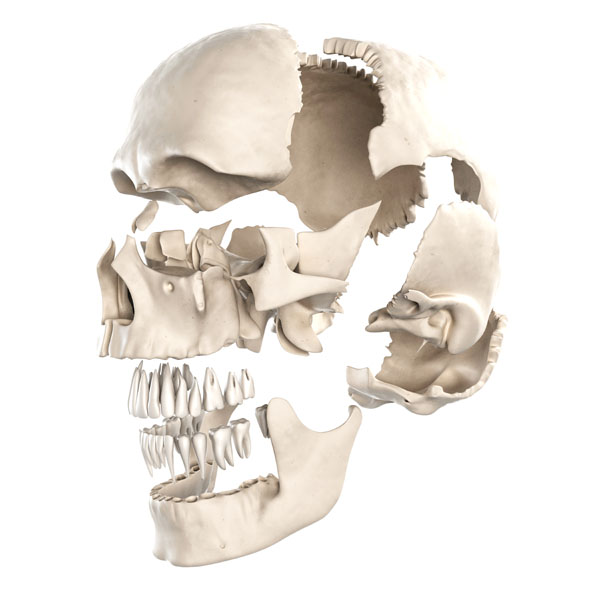I wanted to post on this separate from the other post concerning our cranial pressure release protocol results because this is something different. We have recently seen three young children who are around a year old or below who have what appears to be a buckling or deformation of the cranial bones. With the boy, his left and right parietal bones (sides of his skull) are buckled or protrude outwards where they transition to the top of his head. He is exhibiting signs of mental delay based on his observed behavior and information from the mother. With the girl, her occipital bone at the back of the skull is buckled along the suture line.
All three children have problems with headaches and symptoms related to cranial pressure. It is very difficult to work on them because they cannot sit still long enough for a full session, but the little girl was brought to our office while she was asleep and Bobbi Jo was able to work on her for a while. The buckling appears to be shallowing out after a few sessions, but it is difficult to tell if there are long-term changes. The bones are moving better and the soft tissue outside the skull moves freely. The third child is a boy who shows the same buckling as the first boy.
The pattern we have seen with these three children is with the cause of the buckling. They are all Amish children which means they were not born in a hospital. They were all born with a natural birthing procedure with no instrument intervention. These deformities were not present during the first year. Based on the location of the buckling, it appears that there may have been a concussive force to the front of the head possibly from a fall. The other pattern is with all three parents stating that “someone” has performed a cranial adjustment on them within the first year. One of those people was a grandfather who “knew how to perform a cranial adjustment”, and the other two were chiropractors.
It is our theory that the buckling might have also been caused by cranial adjustments while the bones were still soft and growing. Those adjustments were performed when the soft spots (fontanels) were still present. With the third boy, he had been brought to a chiropractor who stated that the “bones where too big for his head.” We do not recommend performing cranial adjustments for small children while their cranium (soft spot) is still closing. This includes a cranial sacral session.
Disclaimer: These reports are for information purposes only. They should not be considered official research studies that follow standard reporting protocols. This information is designed to promote discussion and introduce a novel therapeutic approach called Vibration Therapy with weighted tuning forks. We are continuing to study the physiological response to a properly placed weighted 128hz tuning fork on a fluid-filled space, and we invite you to follow our work and contact us at nehcacademy@gmail.com if you are interested in learning more. Please consult with a qualified medical professional if you are using this information for your own health care. Results have varied throughout our clients, and we have no expectation or claims that our approach will work for everyone in similar conditions.


